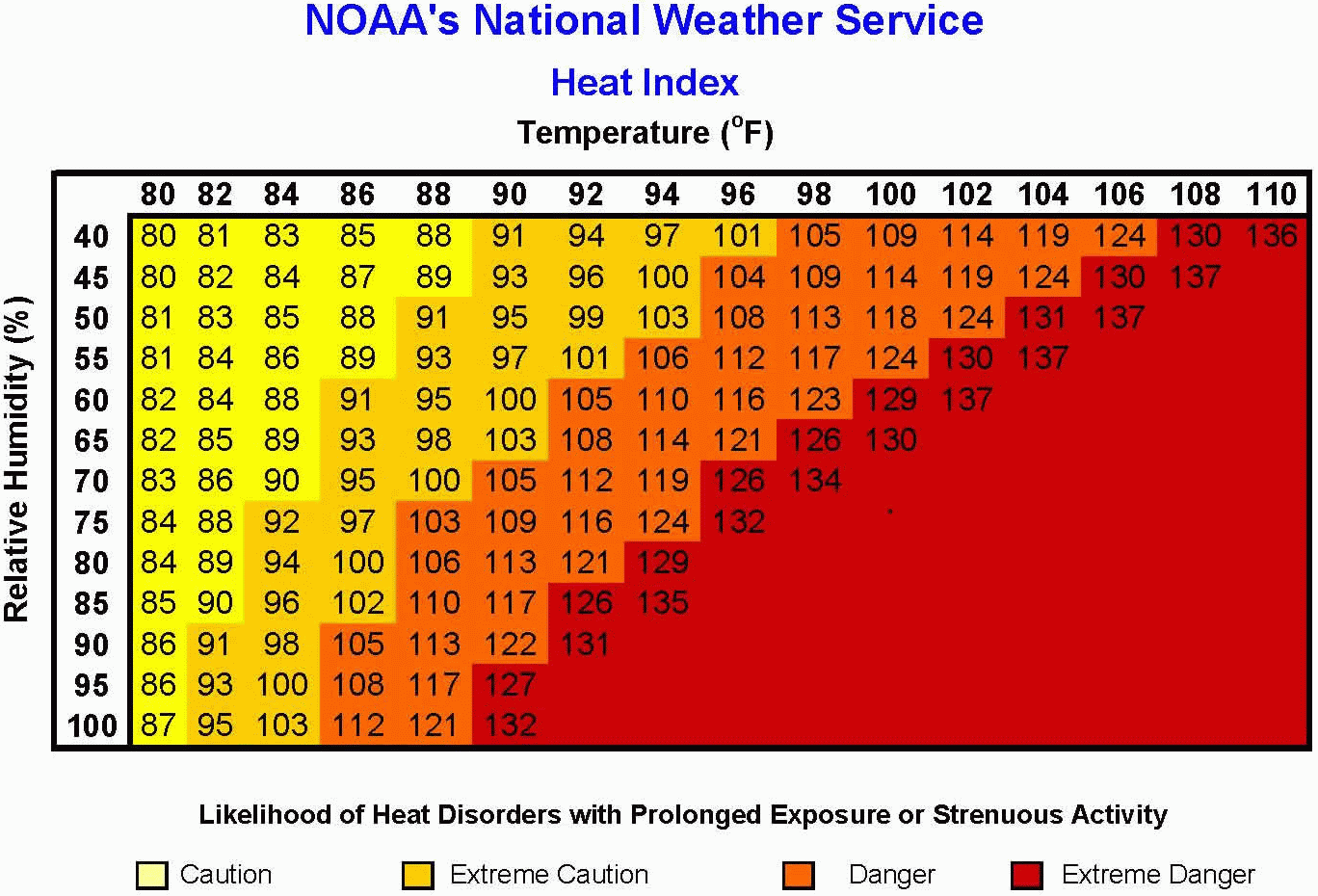Hazard Awareness
|
|
Many residents and visitors to the desert Southwest think that relative humidities are low, and that they do not need to worry about heat stress. While high relative humidities can certainly increase the adverse effects of heat on the human body, the hottest of days in New Mexico can result in numerous health issues. SUNBURN: Redness and pain. In severe cases swelling of skin, blisters, fever, headaches. First Aid: Ointments for mild cases if blisters appear and do not break. If breaking occurs, apply dry sterile dressing. Serious, extensive cases should be seen by physician. HEAT CRAMPS: Painful spasms usually in muscles of legs and abdomen possible. Heavy sweating. First Aid: Firm pressure on cramping muscles, or gentle massage to relieve spasm. Give sips of water. If nausea occurs, discontinue use. HEAT EXHAUSTION: Heavy sweating, weakness, skin cold, pale and clammy. Pulse thready (scarcely perceptible). Normal temperature possible. Fainting and vomiting. First Aid: Get victim out of sun. Lay down and loosen clothing. Apply cool, wet cloths. Fan or move victim to air conditioned room. Sips of water. If nausea occurs, discontinue use. If vomiting continues, seek immediate medical attention. HEAT STROKE (or sunstroke): High body temperature (106° F. or higher). Hot dry skin. Rapid and strong pulse. Possible unconsciousness. First Aid: HEAT STROKE IS A SEVERE MEDICAL EMERGENCY. SUMMON EMERGENCY MEDICAL ASSISTANCE OR GET THE VICTIM TO A HOSPITAL IMMEDIATELY. DELAY CAN BE FATAL. Move the victim to a cooler environment Reduce body temperature with cold bath or sponging. Use extreme caution. Remove clothing, use fans and air conditioners. If temperature rises again, repeat process. Do not give fluids. Persons on salt restrictive diets should consult a physician before increasing their salt intake. |
||||||||||||
Heat Stress Safety
|
||||||||||||
|
||||||||||||
Apparent Temperature Statistics for New Mexico
|
||||||||||||
|
The charts below depict the number of days (single day and four-day periods) that the maximum apparent temperature exceeded the long term 85th percentile at Albuquerque and El Paso for the period 1949 through 2010. The average number of days in Albuquerque is 14 and just slightly higher at El Paso with 16 days. Note that exceeding the 85th percentile on 4 consecutive days occurs much less frequently, although it is still likely to occur at least once each summer. If the day is forecast to be exceptionally hot, or to have a dangerously high heat index, restrict your activity. Chances are that the next day will likely be safer. However, monitor NWS forecasts for extended periods of high heat as these can be particulary hazardous. |
||||||||||||
|
|
||||||||||||
|
|
||||||||||||
|
|
||||||||||||
|
|
||||||||||||
Additional Information
|
||||||||||||
|
Heat stress is particularly dangerous for the elderly, the very young, and any one with a compromised pulmonary condition. However, many people are not aware of the extreme heat stress environment that can be created by the combination of an unventilated parked car and direct sunlight. The interior of a car will heat rapidly when in direct sun due to the "greenhouse affect." Solar radiation is not blocked by the glass windows and readily heats the car interior, but radiation generated by the warming car is not able to pass through the windows. Recent research studies focused on vehicle-related hyperthermia deaths have produced information to help public officials and child safety advocates. The table below is an example, and depicts the maximum interior vehical temperature increases for various time intervals as was determined by compiling a number of studies. The actual temperature change will depend on time of day, cloudinsess and ventilation, but it is important to note that in just 10 minutes, it is possible for the temperature within a car in direct sunlight to warm 22 degrees F. |
||||||||||||
|
|
||||||||||||
|
Source: Grundstein et al. BAMS 2010 |
||||||||||||
|
The heat index (HI) is an index that combines air temperature and relative humidity in an attempt to determine the human-perceived equivalent temperature — how hot it feels, termed the felt or apparent air temperature. The human body normally cools itself by perspiration, or sweating, which evaporates and carries heat away from the body. However, when the relative humidity is high, the evaporation rate is reduced, so heat is removed from the body at a lower rate causing it to retain more heat than it would in dry air. Measurements have been taken based on subjective descriptions of how hot subjects feel for a given temperature and humidity, allowing an index to be made which corresponds a temperature and humidity combination to a higher temperature in drier air. The National Weather Service uses relative humidity and dry bulb temperature to produce the "apparent temperature" or the temperature the body "feels". This is known as the heat index and is illustrated in the table below. Note that this chart is based upon shady, light wind conditions - direct sun can increase your risk. |
||||||||||||
 |
||||||||||||